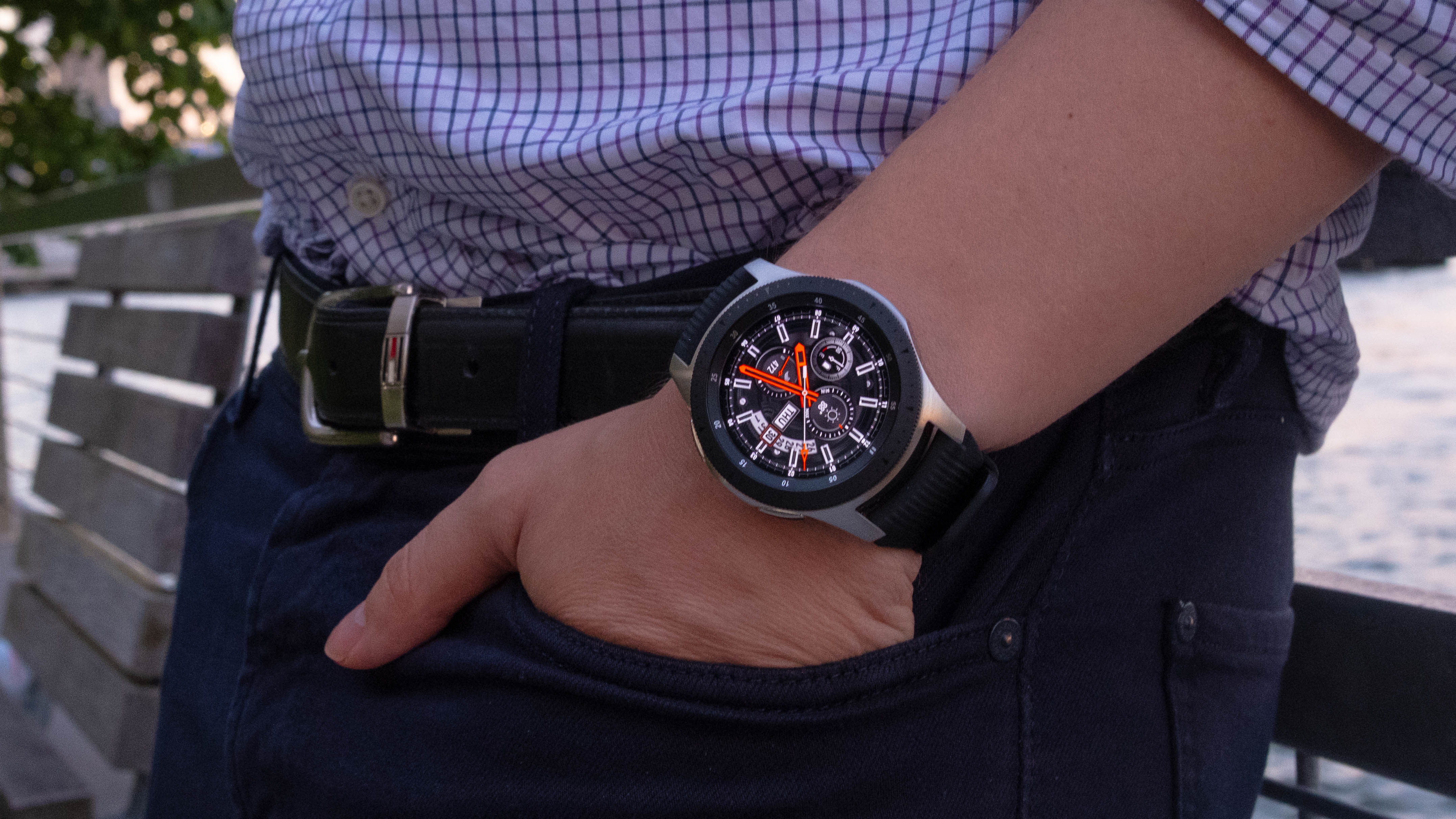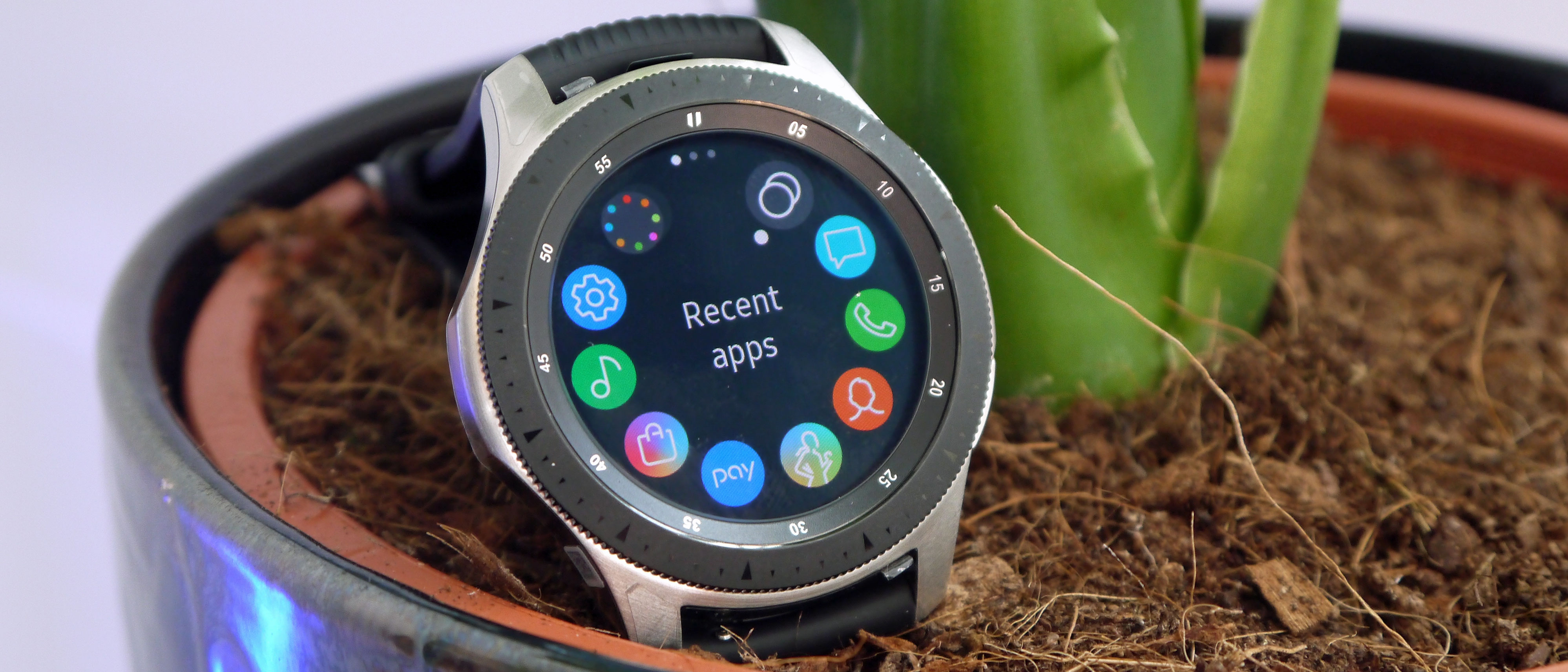Why you can trust TechRadar
Fitness

It may have dropped the “Active” suffix, but the Galaxy Watch is every bit as capable as Samsung’s high-end fitness-centric smartwatches. In fact, it has more fitness tracking options than a lot of fitness trackers and does a handsomely accurate job at it too.
The total number of exercises it can now track is up to 39, 6 of which can be auto-tracked. These include walking, running, dynamic workouts, cycling, elliptical trainer, and rowing. We found auto-tracking to be a been, as manually having to select an exercise can be a hassle, mainly if your workout includes multiple of these.
The auto-tracking would accurately kick in when needed. For example, each time we would walk for over 10 minutes, the watch would track all your metrics, and present them to you at the end of your session in with figures such as steps, calories, and distance.
For every other exercise, you need to toggle the tracking manually. In our testing, the accuracy was about 80% and would vary between exercises. The watch’s big size can be a hindrance and is very likely to look out of place in gym-like environments if that matters to you.
Like most other smartwatches, even the Samsung Galaxy Watch has its way of motivating you to move when it recognizes you’ve been sedentary for a while — with torso twists. Every hour or so, the watch will vibrate, reminding you to move a little. Not sure torso twists are the best exercise, but those can be changed easily.
There’s also a heart-rate tracker that kicks in every few minutes and keeps track of your pulse. The tracking seemed accurate here too. It’s a good way to keep an eye on how effective your cardio workouts are, and if you were able to get the pulse up successfully.
Samsung has also equipped this watch with a stress tracker, which uses the heart-rate as the basis of its calculations. That makes it rather pointless as stress has many more variables to it, and the heart-rate is probably the easiest one of them to be misinterpreted. Nevertheless, a high reading is followed by breathing exercises, which will try to calm you down by getting you to focus on your breathing. At least this was a little more sensible.
Lastly, we also get sleep tracking options, which gives you a break down of your sleep quality and classifies it into restless, light, and motionless sleep. A timeline of sleeping trends can be created to get a better idea of how you sleep, but no interpretations or suggestions are given. The Galaxy Watch isn’t the most comfortable watch to sleep with and was off except on nights we were testing it.
Software
Google tried to usher in smartwatches with the launch of Android Wear back in 2014. Five years and one rechristening later, Wear OS has barely been able to initiate a turnaround or make smartwatches significantly better than what they were back in the day. Thankfully, we saw brands such as Samsung take a bold step away and create their operating system for these tiny phone sidekicks.
Tizen OS has been refined a lot since it first came out, and shines on the Samsung Galaxy Watch. It almost seems like it was made specifically for this watch, something we can’t say about Wear OS watches. The hardware blends in beautifully and takes advantage of all features perfectly.
The rotating bezel is the best example of this union. It’s Samsung’s rival to the Apple Watch’s digital crown, and we love it. It doesn’t look out of place and works precisely how one would expect it. It moves with satisfying clicks at every increment. Even better, it works on every screen you’d expect it to. Any page that has scrolling, lists, or a long message that won’t fit in a single screen can be explored using a clockwise rotation. For calls and music, it acts as the volume rocker. If the premise of the rotating bezel was to give users a better viewing experience, the Samsung Galaxy Watch passes with flying colors. Though, the clicks are bound to get a little loose with time.
When you raise your arm, you are greeted with the watch face of your choice, with screens on the left showing your notifications, and the right side showing apps and other functions. A swipe from the top shows all the quick toggles such as Bluetooth, battery status, airplane mode, brightness, and volume, etc. Their order can be customized.
As with any OS that aims to compete with offerings from Google and Apple, third-party app support is a sore spot. Samsung claims to be actively working with developers for Tizen, but there are evident cracks in the final product. For example, a lot of prominent apps are missing, including WhatsApp, Facebook, Google Maps, YouTube, etc. There are some alternatives, but none really will be as reliable and safe as the official ones.
However, notifications from all apps are shown on the watch, and all messaging ones can be responded to from the watch itself. Tapping on a notification will reveal the entire message with the reply options below. The library of general message replies is bigger than other smartwatches, but the contextual message replies are a hit and miss. Other options include emojis, drawing to type, and T9.
As with all recent Samsung devices, Bixby is present at many places but does little to justify its existence. On a smartwatch, where a lot of functions are supposed to be triggered via voice, Bixby can not seem to keep up. There were too many instances where it would struggle to do basic tasks (which Google Assistant has been doing for a few years now). Moreover, we think it also strives to understand the Indian accent and Indian names, where even multiple tries would not get the desired result. Something as necessary as “send a WhatsApp message to Mom” will confuse the Galaxy Watch.
Even with that quirk, this is a delightful interface that has a much shorter learning curve than that of Wear OS or Watch OS. It is also snappier than what most other full-fledged Android smartwatches offer, and most importantly, it lasts longer.
Current page: Fitness, Software features
Prev Page Price and Availability, Hardware and Design, Calling Next Page Battery life and VerdictAakash is the engine that keeps TechRadar India running, using his experience and ideas to help consumers get to the right products via reviews, buying guides and explainers. Apart from phones, computers and cameras, he is obsessed with electric vehicles.

